Instruction
Four essential movements for a better golf swing
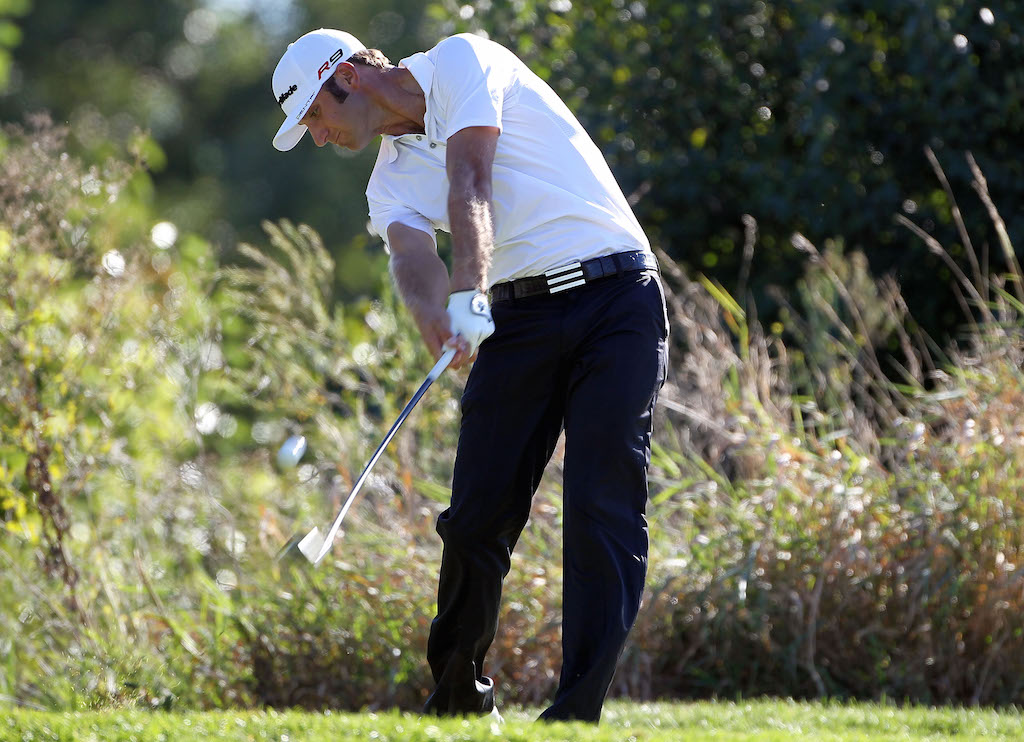
Everything I teach comes from studying the best golfers in the world. I don’t necessarily teach the “Fundamentals of Golf” that I learned growing up as a junior golfer, because I’ve found they don’t apply to all golfers universally.
I prefer to teach what I call the “Tour Fundamentals of Golf,” which I’ve seen seen the majority of golfers on the PGA, LPGA, European, and Champions tours adhere to and apply in their own games.
I’ve found that four movements — rotate, tilt, shift and extend — have a huge effect on club face orientation, swing direction, low-point control, and club head speed. They are essential to playing golf at a high level, and are used by the best players in the world. The difference between an elite golfer and a higher handicapper can also typically be found in one of the four areas.
Let’s break down each fundamental to garner a better understanding of each.
Rotate
The initial move away from the golf ball is very important, as it sets the tone for the rest of the swing. The best players in the world begin the swing by rotating the buttons of the shirt (center of sternum) until they point at the trail knee. This will place the hands just past the knee, with the club head just slightly out in front of the hands. The average tour player has 27 degrees of rotation prior to the club becoming parallel to the ground in the backswing. There will be tilting going on as the player rotates also, but that is setup by forward bend at address. I like a player to think “rotation” in the first few inches away from the golf ball, and then the thought of “tilting” follows.
Tilt
Once the buttons of the shirt, or center of sternum, are pointing at the trail knee it’s time to begin adding tilt. For a right-handed golfer, that means feeling your left shoulder working down and across, moving the hands and arms inward. The average tour player begins with their trail shoulder tilted 11 degrees downward at address, and by the time they reach the top of the backswing the forward shoulder is tilted downward 36 degrees. That means from the time the buttons reach the trail knee in the rotation phase, the shoulders tilt another 20-plus degrees before the player reaches the top of the backswing.
Shift
Movement in the transition and into the downswing should begin with a lateral bump of the hips towards the target. This initial move is key to facilitating the plane in which the golf club will be moving into impact. From the top, Tour players shift and sit down into the ground so that they can then spring up and create maximum force into impact. The average golfer typically does the opposite; they begin with a spinning of the hips, and with most players not being able to disassociate the hips from torso, the golf club is out of balance and on top of the plane. This also leaves them on their trail side coming into impact due to the spinning action, creating both thin and heavy mishits.
Extend
The extension (straightening) of the arms, club, and body after impact is a key characteristic all great ball strikers have in common, and each movement is produced by what happens prior to impact — so the first three movements are very important! The best players in the world use the ground to push off of just prior to impact, causing the legs and pelvis to straighten post impact. This is why they are able to hit the golf ball as far as they do. This movement is also what controls the positioning of the golf club. Don’t be afraid to feel the front knee straightening through impact. The backside will then begin to tuck under and the arms will extend. Unfortunately, I see 95 percent of golfers trying to do the opposite, which robs them of power and the consistency they want.
For more information on what I call the “Tour Fundamentals of Golf,” I’d welcome you to read my book, The 5 Tour Fundamentals of Golf. Click here to purchase.
Instruction
The Wedge Guy: Beating the yips into submission

There may be no more painful affliction in golf than the “yips” – those uncontrollable and maddening little nervous twitches that prevent you from making a decent stroke on short putts. If you’ve never had them, consider yourself very fortunate (or possibly just very young). But I can assure you that when your most treacherous and feared golf shot is not the 195 yard approach over water with a quartering headwind…not the extra tight fairway with water left and sand right…not the soft bunker shot to a downhill pin with water on the other side…No, when your most feared shot is the remaining 2- 4-foot putt after hitting a great approach, recovery or lag putt, it makes the game almost painful.
And I’ve been fighting the yips (again) for a while now. It’s a recurring nightmare that has haunted me most of my adult life. I even had the yips when I was in my 20s, but I’ve beat them into submission off and on most of my adult life. But just recently, that nasty virus came to life once again. My lag putting has been very good, but when I get over one of those “you should make this” length putts, the entire nervous system seems to go haywire. I make great practice strokes, and then the most pitiful short-stroke or jab at the ball you can imagine. Sheesh.
But I’m a traditionalist, and do not look toward the long putter, belly putter, cross-hand, claw or other variation as the solution. My approach is to beat those damn yips into submission some other way. Here’s what I’m doing that is working pretty well, and I offer it to all of you who might have a similar affliction on the greens.
When you are over a short putt, forget the practice strokes…you want your natural eye-hand coordination to be unhindered by mechanics. Address your putt and take a good look at the hole, and back to the putter to ensure good alignment. Lighten your right hand grip on the putter and make sure that only the fingertips are in contact with the grip, to prevent you from getting to tight.
Then, take a long, long look at the hole to fill your entire mind and senses with the target. When you bring your head/eyes back to the ball, try to make a smooth, immediate move right into your backstroke — not even a second pause — and then let your hands and putter track right back together right back to where you were looking — the HOLE! Seeing the putter make contact with the ball, preferably even the forward edge of the ball – the side near the hole.
For me, this is working, but I am asking all of you to chime in with your own “home remedies” for the most aggravating and senseless of all golf maladies. It never hurts to have more to fall back on!
Instruction
Looking for a good golf instructor? Use this checklist

Over the last couple of decades, golf has become much more science-based. We measure swing speed, smash factor, angle of attack, strokes gained, and many other metrics that can really help golfers improve. But I often wonder if the advancement of golf’s “hard” sciences comes at the expense of the “soft” sciences.
Take, for example, golf instruction. Good golf instruction requires understanding swing mechanics and ball flight. But let’s take that as a given for PGA instructors. The other factors that make an instructor effective can be evaluated by social science, rather than launch monitors.
If you are a recreational golfer looking for a golf instructor, here are my top three points to consider.
1. Cultural mindset
What is “cultural mindset? To social scientists, it means whether a culture of genius or a culture of learning exists. In a golf instruction context, that may mean whether the teacher communicates a message that golf ability is something innate (you either have it or you don’t), or whether golf ability is something that can be learned. You want the latter!
It may sound obvious to suggest that you find a golf instructor who thinks you can improve, but my research suggests that it isn’t a given. In a large sample study of golf instructors, I found that when it came to recreational golfers, there was a wide range of belief systems. Some instructors strongly believed recreational golfers could improve through lessons. while others strongly believed they could not. And those beliefs manifested in the instructor’s feedback given to a student and the culture created for players.
2. Coping and self-modeling can beat role-modeling
Swing analysis technology is often preloaded with swings of PGA and LPGA Tour players. The swings of elite players are intended to be used for comparative purposes with golfers taking lessons. What social science tells us is that for novice and non-expert golfers, comparing swings to tour professionals can have the opposite effect of that intended. If you fit into the novice or non-expert category of golfer, you will learn more and be more motivated to change if you see yourself making a ‘better’ swing (self-modeling) or seeing your swing compared to a similar other (a coping model). Stay away from instructors who want to compare your swing with that of a tour player.
3. Learning theory basics
It is not a sexy selling point, but learning is a process, and that process is incremental – particularly for recreational adult players. Social science helps us understand this element of golf instruction. A good instructor will take learning slowly. He or she will give you just about enough information that challenges you, but is still manageable. The artful instructor will take time to decide what that one or two learning points are before jumping in to make full-scale swing changes. If the instructor moves too fast, you will probably leave the lesson with an arm’s length of swing thoughts and not really know which to focus on.
As an instructor, I develop a priority list of changes I want to make in a player’s technique. We then patiently and gradually work through that list. Beware of instructors who give you more than you can chew.
So if you are in the market for golf instruction, I encourage you to look beyond the X’s and O’s to find the right match!
Instruction
What Lottie Woad’s stunning debut win teaches every golfer

Most pros take months, even years, to win their first tournament. Lottie Woad needed exactly four days.
The 21-year-old from Surrey shot 21-under 267 at Dundonald Links to win the ISPS Handa Women’s Scottish Open by three shots — in her very first event as a professional. She’s only the third player in LPGA history to accomplish this feat, joining Rose Zhang (2023) and Beverly Hanson (1951).
But here’s what caught my attention as a coach: Woad didn’t win through miraculous putting or bombing 300-yard drives. She won through relentless precision and unshakeable composure. After watching her performance unfold, I’m convinced every golfer — from weekend warriors to scratch players — can steal pages from her playbook.
Precision Beats Power (And It’s Not Even Close)
Forget the driving contests. Woad proved that finding greens matters more than finding distance.
What Woad did:
• Hit it straight, hit it solid, give yourself chances
• Aimed for the fat parts of greens instead of chasing pins
• Let her putting do the talking after hitting safe targets
• As she said, “Everyone was chasing me today, and managed to maintain the lead and played really nicely down the stretch and hit a lot of good shots”
Why most golfers mess this up:
• They see a pin tucked behind a bunker and grab one more club to “go right at it”
• Distance becomes more important than accuracy
• They try to be heroic instead of smart
ACTION ITEM: For your next 10 rounds, aim for the center of every green regardless of pin position. Track your greens in regulation and watch your scores drop before your swing changes.
The Putter That Stayed Cool Under Fire
Woad started the final round two shots clear and immediately applied pressure with birdies at the 2nd and 3rd holes. When South Korea’s Hyo Joo Kim mounted a charge and reached 20-under with a birdie at the 14th, Woad didn’t panic.
How she responded to pressure:
• Fired back with consecutive birdies at the 13th and 14th
• Watched Kim stumble with back-to-back bogeys
• Capped it with her fifth birdie of the day at the par-5 18th
• Stayed patient when others pressed, pressed when others cracked
What amateurs do wrong:
• Get conservative when they should be aggressive
• Try to force magic when steady play would win
• Panic when someone else makes a move
ACTION ITEM: Practice your 3-6 foot putts for 15 minutes after every range session. Woad’s putting wasn’t spectacular—it was reliable. Make the putts you should make.
Course Management 101: Play Your Game, Not the Course’s Game
Woad admitted she couldn’t see many scoreboards during the final round, but it didn’t matter. She stuck to her game plan regardless of what others were doing.
Her mental approach:
• Focused on her process, not the competition
• Drew on past pressure situations (Augusta National Women’s Amateur win)
• As she said, “That was the biggest tournament I played in at the time and was kind of my big win. So definitely felt the pressure of it more there, and I felt like all those experiences helped me with this”
Her physical execution:
• 270-yard drives (nothing flashy)
• Methodical iron play
• Steady putting
• Everything effective, nothing spectacular
ACTION ITEM: Create a yardage book for your home course. Know your distances to every pin, every hazard, every landing area. Stick to your plan no matter what your playing partners are doing.
Mental Toughness Isn’t Born, It’s Built
The most impressive part of Woad’s win? She genuinely didn’t expect it: “I definitely wasn’t expecting to win my first event as a pro, but I knew I was playing well, and I was hoping to contend.”
Her winning mindset:
• Didn’t put winning pressure on herself
• Focused on playing well and contending
• Made winning a byproduct of a good process
• Built confidence through recent experiences:
- Won the Women’s Irish Open as an amateur
- Missed a playoff by one shot at the Evian Championship
- Each experience prepared her for the next
What this means for you:
• Stop trying to shoot career rounds every time you tee up
• Focus on executing your pre-shot routine
• Commit to every shot
• Stay present in the moment
ACTION ITEM: Before each round, set process goals instead of score goals. Example: “I will take three practice swings before every shot” or “I will pick a specific target for every shot.” Let your score be the result, not the focus.
The Real Lesson
Woad collected $300,000 for her first professional victory, but the real prize was proving that fundamentals still work at golf’s highest level. She didn’t reinvent the game — she simply executed the basics better than everyone else that week.
The fundamentals that won:
• Hit more fairways
• Find more greens
• Make the putts you should make
• Stay patient under pressure
That’s something every golfer can do, regardless of handicap. Lottie Woad just showed us it’s still the winning formula.
FINAL ACTION ITEM: Pick one of the four action items above and commit to it for the next month. Master one fundamental before moving to the next. That’s how champions are built.
PGA Professional Brendon Elliott is an award-winning coach and golf writer. You can check out his writing work and learn more about him by visiting BEAGOLFER.golf and OneMoreRollGolf.com. Also, check out “The Starter” on RG.org each Monday.
Editor’s note: Brendon shares his nearly 30 years of experience in the game with GolfWRX readers through his ongoing tip series. He looks forward to providing valuable insights and advice to help golfers improve their game. Stay tuned for more Tips!

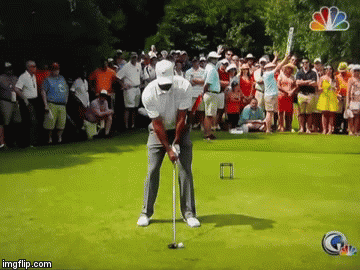
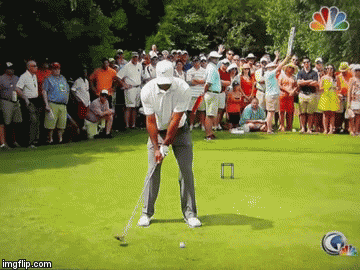
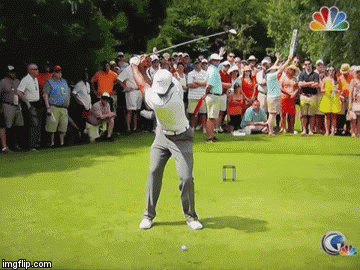
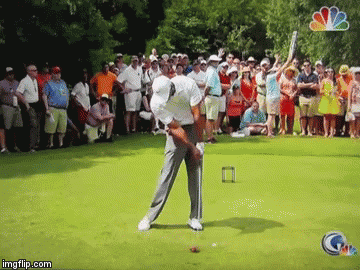









Pingback: “Unveiling the Strength Regimen of Jack Nicklaus: Does the Golden Bear Lift Weights?” – PrestwickCountryClub.net
Gene
Nov 18, 2015 at 1:39 pm
Bill, am I missing something? The title of your book is “The 5 tour Fundamentals of Golf”, but in your WRX article you write about the “Four Essential Moves for a Better Golf swing.” I am wondering if it is four or five fundamentals (essentials) for a better golf swing?
Drew
Nov 5, 2015 at 11:37 pm
Bill- great article, very well written. I love the videos. Hopefully, I can get on your waiting list because I would make the drive from ma. Thanks for sharing your thoughts.
Nick Clearwater
Nov 3, 2015 at 5:20 pm
The swing description and measurements sound very familiar, Bill 😉
Glad to read you are doing well and putting out some good information!
Jerry G
Nov 3, 2015 at 2:59 pm
Great article. One question, I notice you say great players start the downswing with a hip bump toward the target and others use a rotation. The gif of Tiger looks more like a rotation to me, am I missing something? Thanks for the help!
Andrew Cooper
Nov 3, 2015 at 10:57 am
Bill, Rotation then tilt… Isn’t the backswing going to be rotation and tilting simultaneously? rather than in two separate phases/moves. And the average angles you mention-with what club is that? and what are the acceptable parameters? Thanks.
Bill Schmedes III, PGA
Nov 3, 2015 at 11:55 am
Yes, good question. It doesn’t happen in two separate phases there is just more rotation then tilt early on with torso thats why it was broken up into two phases. The rotation and tilt section pretty much just explain how the body goes from forward bend into side bend as backswing gets closer to top position. Club being hit is a fairway wood. Hope that helps a bit..
Andrew Cooper
Nov 4, 2015 at 5:18 am
Bill, Thanks for the reply and clarification.
I ask about acceptable parameters because I think this is important. The average numbers you mention are just that, averages. I suspect the range is actually pretty big e.g. Bernhard Langer looks to have a lot of early rotation (more than 27 degrees) while Fred Couples hasn’t much. Or Bubba Watson has a lot of tilt compared to a flatter shoulder turn like Love III for instance. Turning and tilting, to various degrees, is a given; good players, bad players, indifferent players all do this. Therefore elevating these to “tour fundamentals” seems a bit of a stretch.
Mark
Nov 2, 2015 at 8:12 pm
This is the best explanation and video of the bump move I have ever seen. I found with my swing the right leg does NOT move, must feel firm and stacked for this bump to work effectively. I did this playing yesterday. My missing link.
Bill Schmedes III, PGA
Nov 3, 2015 at 11:45 am
Thanks Mark
ACas
Nov 2, 2015 at 12:27 pm
The “Lateral Bump” is a move that when I put it together my distance and accuracy are at its best. But, it also has created a very inconsistent swing for me, more so coming over the top or I’m leaving the face open. Point is it has me hitting more slices than before. Can you elaborate on this move? In particular how much should this lateral bump in length be? how aggressive do you bump forward? etc…
Any added information would be greatly appreciated.
Bill Schmedes III, PGA
Nov 3, 2015 at 11:45 am
Be careful with the bump. Should only be the pelvis early in the transition. If the pelvis & shoulder go together there isn’t separation and that’s where the miss can come from.
RoGar
Nov 2, 2015 at 11:10 am
I love the comments of the non believers, I have been playing golf for almost 30 years and teaching for 5. I have always tried to pick the different moves of better players, not only tour players, but top amateurs also. Mr. Schmedes obviously picked up on the same things I did, let’s say the 4 of many very important positions. He’s not making these positions up, he just has great eyes, and a very different perspective than most. I love the article, job well done!!!
Bill Schmedes III, PGA
Nov 3, 2015 at 11:43 am
Thanks!
Marco
Nov 2, 2015 at 5:01 am
I think to much “TILT” is bad for your back with a high swing speed…so you have showed Tiger…i think he have some back problems? Right?
Bill Schmedes III, PGA
Nov 2, 2015 at 10:09 am
Yes too much would not be good on the body. Over the years I have seen a very small number of amateur golfers with too much. Almost always they show to little. The videos show off each key nicely but for the record I did not pick the golfer to be used that was done by WRX
marcel
Nov 1, 2015 at 6:47 pm
here are 100% proven 4 movements for better Golf:
1. Get a Golf Coach
2. Get a Golf Coach or quit
3. Get a Golf Coach and stop complaining
4. Get a Golf Coach – not new golf set!
if this fails – focus on soccer or running
Alex
Nov 1, 2015 at 11:07 am
This is a recipe for manufactured positions rather than a fluid swing incorporating all of these asepcts, if you taught this to an average golfer they would be a mess. Terrible pros (like this writer) like to break down the swing into parts, (there is tilt already working when you rotate). Please keep teaching these machanical motions to students, they will come to me for lessons to get straightened out. I should actually thank Bill here, the more people who read this, the more will be coming to me for lessons with their garbage swings!
Bill Schmedes III
Nov 1, 2015 at 8:31 pm
Thanks for the comments Alex. I see no one taught you any manners throughout your years and I’m sorry for that. It doesn’t appear I know you and you obviously don’t know anything about me based on your comments. It’s simple an article made for golfers looking to see what many of the top players in the world are currently doing. I’m one of the busiest coaches I know with a waiting list so I’d love for you to take some players of mine. May help me get a vacation!
Steve
Nov 1, 2015 at 9:00 pm
I understand both of your thoughts. When i am taught to be in correct positions all i do is think about hitting those positions and not hitting the ball. Completely slows down my swing. But i understand that he is just making a comparison.
KK
Nov 2, 2015 at 5:30 am
Alex, where do you teach and what are your credentials?
Sb
Nov 2, 2015 at 8:34 am
Alex, easy to throw stones from your moms basement in between handfuls of Cheetos. Share with us where you are from and where you teach. Tbh, you sound like a range hack who has all the answers and breaks 90 once a year. Until we know who you are, a hack is how you will be treated. Don’t get any crumbs on your laptop.
J-Rock
Nov 1, 2015 at 7:04 am
I like the term tour fundamentals. Too many amateurs think they can just hit balls and they’ll eventually get the cap down. There’s a reason tour pros have a lot of similarities in their swings. These four fundamentals couldn’t be truer, but…. The vague description of how it’s done won’t help many. A good instructor can recognize these similarities, as you have done. A great instructor can understand, perform and then explain in detail how to perform it. I don’t believe the information given here will help anyone achieve these fundamentals.
I see this pattern throughout the golf instruction industry. It’s probably because instructors are mostly failed tour pros who A: don’t remember how they learned to swing. B: are missing some components of the tour fundamentals themselves.
E.g. the squat and thrust. No tour pro does this. From an outside in view, it looks like they do, this all began with announcers describing Rory’s swing though. The squat and thrust is a byproduct of other mechanical movements in the swing. You need to find and understand the root of the movements which can only be achieved by performing them yourself.
Bill Schmedes III
Nov 1, 2015 at 8:41 pm
Thanks for the comments. It’s just an article with a limited amount of words to use so I can only get so much information in J-Rock. I also completely disagree with your comments especially towards the end about no tour players squat and thrust. If you were to see the data through 6D and force plates you would find your comments couldn’t be any further from the truth. I do agree that specific movements effect others in a player to player basis though.
Mike W
Nov 1, 2015 at 12:34 am
Can you elaborate on the left shoulder working ‘down and across’. I think I know what you mean but can you clarify – down and across….what? Would you say the initial takeaway (ie. the first part of the rotation) is pushing the left hand away from the target, and maybe slightly inward toward the right hip? Thanks.
other paul
Nov 1, 2015 at 7:03 am
Take it away low and slow
-op
Christestrogen
Nov 1, 2015 at 8:02 pm
Imagine there is like 50 nails going into the ground…..and you only have 49 hammers…
-Christosterone
Bill Schmedes III
Nov 1, 2015 at 8:45 pm
Mike,
Left shoulder working down and across is just the movement of the shoulder joint as the body goes from forward bend to side bend. Down would be tilting (side bend) and across would be the rotation of it. Hope that clears things up. Thanks
Mike W
Nov 2, 2015 at 12:58 am
Thanks Bill.
Nolanski
Oct 31, 2015 at 10:54 pm
Great stuff. I have a tendency to spin out and for whatever reason my body/mind doesn’t want to release the club. I’ll work on it this winter!
Bill Schmedes III
Nov 1, 2015 at 8:46 pm
Thanks!
Andy Saunders
Oct 31, 2015 at 3:04 pm
I’ve been going through a major swing change since July. The article sums up my feeling of swinging now, tilt, rotate, swing right down the line(release/extend). Honestly, I’m a 4 cap and don’t really understand how it works, but when I swing “down the line, feeling like I’m hitting a fade” as my PGA Pro wants me to, it results in a crazy powerful slight draw every time, easy to repeat. But, months of repetition to get there, and I’m just beginning to see results over the last month after 4 months of work. It’s exciting! Crazy how the proper swing works.
Bill Schmedes III
Nov 1, 2015 at 8:46 pm
Best of luck Andy!